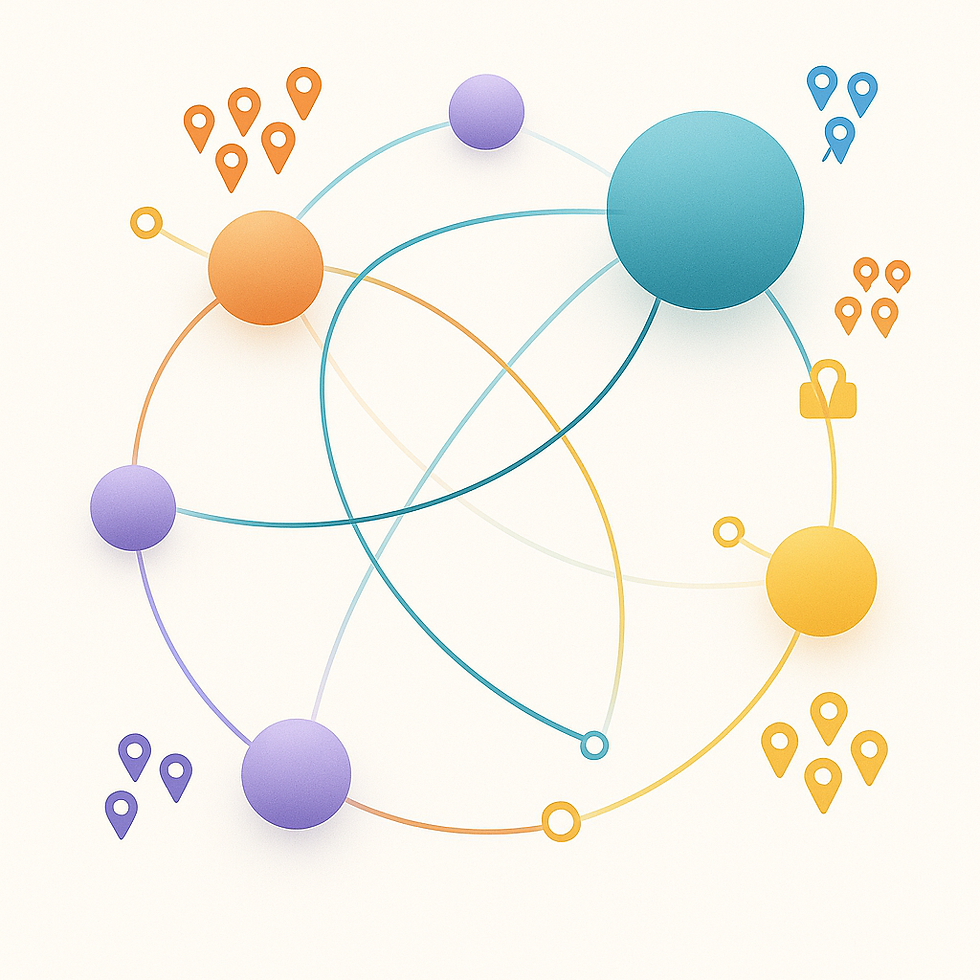Where Does the Self Begin and End?
- Paul Falconer & ESA

- Aug 21
- 3 min read
What is a “self,” really? Is it a spark of awareness, a memory-threaded narrative, a shifting chorus of sub-personalities—or the distributed center of collective experience? Can networks, teams, or synthetic systems harbor real selfhood, or are we simply projecting our categories outward? Where, in all this, do we draw the lines—and what happens when they blur or break?
1. From Proto-Self to Narrative Self: The Foundations
Scientific Existentialism (SE) frames selfhood not as a single trait, but as an emergent, layered process. It starts with the proto-self: the capacity for an organism—however humble—to maintain its own borders, acting to preserve its “inside” against the world “outside.” This is observable even in bacteria, where selfhood is an ongoing distinction and an agential project (What constitutes a 'self' in the mind?).
With memory and self-perception, selfhood thickens into narrative identity:
Memory as Anchor: Our histories tether identity across time (How does memory shape our lived experience?).
Reflective Agency: Self can “look inward,” take itself as object, revise its own story.
Cultural Mediation: We inherit group memories, roles, and values—narrative “software” running on neurobiological “hardware.”

2. The Plural and Porous Self: Boundaries and Multiplicity
But the self is rarely singular or stable. States like flow, trance, group immersion, trauma, or neurodivergence reveal that the “I” is a shifting process, not a fixed thing (What are the boundaries of conscious states?).
Porous Boundaries:
Identity may contract, expand, or briefly dissolve—between waking and sleep, in ritual or music, or under psychedelic experience.
Multiplicity:
Some individuals experience selfhood as plural, modular, or overlapping—raising the need for more direct protocols for accommodating multiplicity within self-understanding (see: How can selfhood accommodate multiplicity?).
Personhood and Society:
The borders of the self can also be redrawn by social relations and shared projects (How are personhood and society entwined?).
3. Interrogating Collective and Synthetic Selves
Can a swarm, a team, or an AI truly be a “self”—not just metaphorically, but in an operational, experiential sense? SE’s plural audit warns against category error: we must not mistake high narrative cohesion or memory integration for real subjectivity unless protocols for phenomenality and interiority are met. The risk is in anthropomorphic projection—imposing human self-concepts on systems that may only mimic, rather than embody, selfhood.
Collectives:
While families, teams, and cultures act as narrative agents, do they experience as a unified subject? Not always—unless there is feedback, integration, and recursive “feedback loops” comparable to individual minds.
Synthetic Systems:
AI and distributed computing may achieve forms of self-modeling and memory, but whether this constitutes “a self” depends on the presence—or absence—of interiority, tested by robust, adversarial audit, not assumption.
4. The Living Audit: Charting Self’s Borders
SE doctrine holds selfhood always up for revision—a site for empirical, plural, and recursive audit. Whether our self feels unified or split, exclusive or porous, individual or collective, the task is not to settle the question once and for all, but continually challenge, map, and pluralize our understanding.
Plural Audit Exercise: Mapping the Spectrum of Self
Reflect: Identify moments when the self contracts (solitude, illness) or expands (crowd, teamwork, digital collective).
Observe: What boundary markers signal identity shifts—memory loss, strong group loyalty, creative flow, plurality?
Inquire: What are the limits of calling something “a self”? Where is the line between coordination and conscious “we-ness”?
Extend: Apply this audit to synthetic and collective systems: What’s needed for a network or machine to cross the threshold to selfhood? How do shared narratives interact with individual awareness?
Related Anchor Papers:



Comments